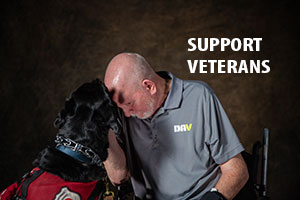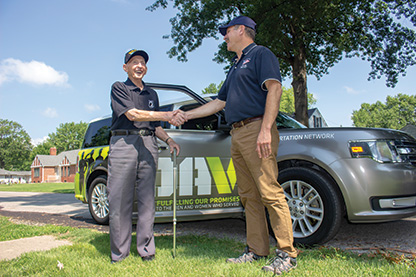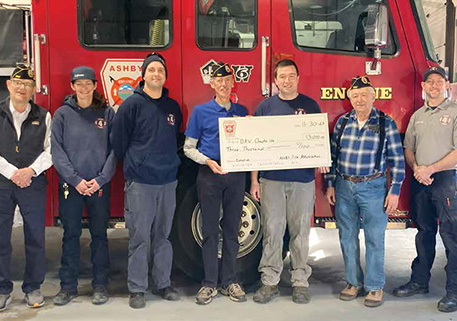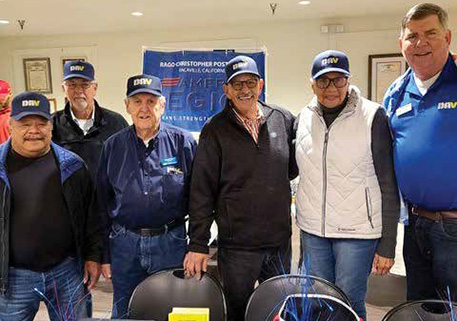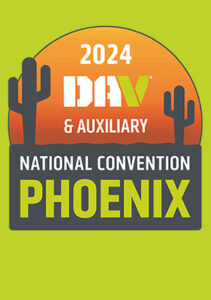Military Burn Pits Exposure
Military service, undoubtedly, comes with risks. The brave men and women who answer our nation’s call do so under the under the heightened prospect of severe injury or death. However, one often overlooked aspect of service is the threat of illness due to toxic exposures.
Service members have encountered harmful substances through their everyday military duties for generations. Wide ranging illnesses may show symptoms immediately or may cause long-term damaging effects that go unnoticed for many years—decades, in some cases— until they pose major health concerns for veterans.
But help is now available.
DAV was instrumental in getting the SFC Heath Robinson Honoring Our Promise to Address Comprehensive Toxics (PACT) Act to the president’s desk. The landmark law ushers in a new era for veterans exposed to toxic substances.
What is the PACT Act?
It is the largest and most comprehensive toxic exposure legislation ever considered, and was signed into law on August 10, 2022. The sweeping and historic bill expands VA benefits to millions of veterans exposed to various toxic substances, including burn pits, and lists illnesses and conditions with presumptive status.
What is presumptive service connection?
For specific diagnosed diseases, VA will presume they were caused by their military service. This lifts the undue burden of proving exposure away from veterans, and unlocks their earned benefits, including disability compensation.
What are the PACT Act presumptive conditions?
For post-9/11 veterans, the law covers 12 varieties of cancer and 12 respiratory diseases linked to burn pits. Hypertension and monoclonal gammopathy of undetermined significance (MGUS) for veterans who served in Vietnam. And for veterans diagnosed with conditions linked to radiation exposure who served in eligible locations in the 1960s and 1970s.
A full list of illnesses is available on this VA website.
DAV was the first to bring the hazards of burn pits to light in 2007 and has made further research into these exposures an ongoing legislative priority. In 2010, lawmakers banned the military from using burn pits except where there was no feasible alternative. In 2013, at DAV’s behest, Congress mandated the creation of the VA’s Airborne Hazards and Open Burn Pit Registry, and the 2018 defense-spending bill required the VA to coordinate further research on the effects of burn pits.
When/How should I apply for VA benefits under the PACT Act?
Now. VA is accepting claims for all presumptive illnesses included in the landmark legislation. DAV benefits advocates stand ready to assist with claims. You can contact one nearest you by going to Benefitsquestions.org.
Even if you were denied your disability claim in the past, you can file a supplemental claim if your condition is considered presumptive by VA.
Get VA Benefits Claim Assistance Now
Contact your local DAV office. They will help you file a claim and stick with you all through the process, because no veteran should have to go at it alone.
Does the PACT Act provide benefits for survivors?
Yes. Surviving family members of a deceased veteran may be eligible for benefits, including monthly VA Dependency and Indemnity Compensation (DIC) payments. To file a claim, family members should contact a DAV benefits advocate using the link above.
Burn pits and other airborne hazards
DAV was the first to bring the hazards of burn pits to light in 2007 and has made further research into these exposures an ongoing legislative priority. In 2010, lawmakers banned the military from using burn pits except where there was no feasible alternative. In 2013, at DAV’s behest, Congress mandated the creation of the VA’s Airborne Hazards and Open Burn Pit Registry, and the 2018 defense-spending bill required the VA to coordinate further research on the effects of burn pits.
Burn pits have been used for decades to dispose of waste and garbage generated on American military bases overseas. Most recently, their use in Iraq and Afghanistan was prolific. There were more than 250 burn pits in those combat theaters that released an array of pollutants into the air, including particulate matter and known carcinogens. However, there is a misconception that burn pit exposure only impacts post-9/11 veterans.
During Operations Desert Shield and Desert Storm (1990–1991) and since, burn pits were utilized in not only Iraq but also Kuwait, Oman, Qatar, United Arab Emirates, Saudi Arabia and Bahrain. During Operation Joint Endeavor in Bosnia in 1995 and 1996, burn pits were considered an operational necessity during combat operations. Since Sept. 11, 2001, burn pits have been used throughout the operations in Afghanistan and Djibouti, as well as in Iraq after March 20, 2003.
If you are a veteran or service member who deployed to the Southwest Asia theater of operations on or after Aug. 2, 1990, or deployed to Afghanistan or Djibouti after Sept. 11, 2001, you can use the Airborne Hazards and Open Burn Pit Registry questionnaire to report exposures to airborne hazards (including smoke from burn pits, oil-well fires or other pollution), as well as other exposures and health concerns.
Registering can help you identify changes in your health, guide discussions with your health care provider and learn about follow-up care or VA benefits.

